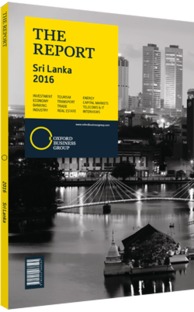Ajit Gunewardene, Deputy Chairman, John Keells Holdings: Interview

Interview: Ajit Gunewardene
What do major mixed-use developments mean for Colombo’s development?
AJIT GUNEWARDENE: The mixed-use Cinnamon Life development is the largest private-sector investment in Sri Lanka to date, and it aims to capitalise on the growing numbers of tourist arrivals. Even though there have been noteworthy improvements in relation to general infrastructure and flight connectivity, Sri Lanka requires facilities offering entertainment and lifestyle activities. In light of this, Cinnamon Life will include an 800 room hotel, a range of specialty restaurants, conferencing and banqueting facilities, rentable retail and entertainment spaces, as well as office space and more than 400 residential units.
Additionally, the prospects for meetings, incentives, conferences and exhibitions (MICE) are propitious. India is one of the fastest growing markets for MICE travel and, given Sri Lanka’s close proximity, flight connectivity and the lack of alternate locations, this segment presents a significant opportunity.
Against this backdrop, Cinnamon Life is ideally positioned to bridge the current infrastructure gap and become a leading destination in South Asia. Additionally, projects of this size – from design, to construction, to operations – can facilitate technology and knowledge transfer to other sectors of the Sri Lankan economy and act as an outlet for small and medium-sized enterprises in the tourism industry.
What do you see driving GDP growth in the next five years from a private sector perspective?
GUNEWARDENE: Sri Lanka’s GDP has been driven by the services and industrial sectors, with agriculture making its contribution sporadically. The services sector, where Sri Lanka has comparative and competitive advantages, is expected to remain a key contributor to the economy. The leisure sector, in particular, will grow as tourist arrivals increase. Sri Lanka can emerge as the most popular destination in Asia if it can cater to high-spending tourists and business travellers. This can be done by making the right products and services available to complement the natural geographical attractions that Sri Lanka offers. I have no doubt that the leisure industry, a low-hanging fruit with great potential for improved margins, will, with its multiplier effects, be a primary driver of GDP. The financial services sector has invested heavily in research and development, IT and other customer-demanded elements. We expect the benefits of these actions to be seen in the medium term as economic activity expands with increasing per capita incomes among the population.
We also anticipate the manufacturing subsector to grow as increasing disposable income translates into greater spending, with improving customer confidence. The better-than-expected performance by the consumer foods and retail sectors in the last few quarters confirms this trend.
In which ways could the entrepreneurial climate of Sri Lanka be improved?
GUNEWARDENE: Although small and medium-sized enterprises account for roughly 80% of all business activity in the country, the education system in Sri Lanka rarely caters to the promotion of creativity, innovation and entrepreneurship. Financial constraints related to access to financing and markets – due to lack of credit history, business experience and collateral – also often result in the downplay of risk-taking, innovation and development of new ideas. The averseness to risk-taking in the financial sector needs to be addressed by the government at a national policy level. Additionally, the private sector, in collaboration with the government, can introduce various initiatives to foster entrepreneurship and creative thinking. This could include accelerator programmes, incubator programmes and “angel funds”, working in an overarching enabling environment.
You have reached the limit of premium articles you can view for free.
Choose from the options below to purchase print or digital editions of our Reports. You can also purchase a website subscription giving you unlimited access to all of our Reports online for 12 months.
If you have already purchased this Report or have a website subscription, please login to continue.

